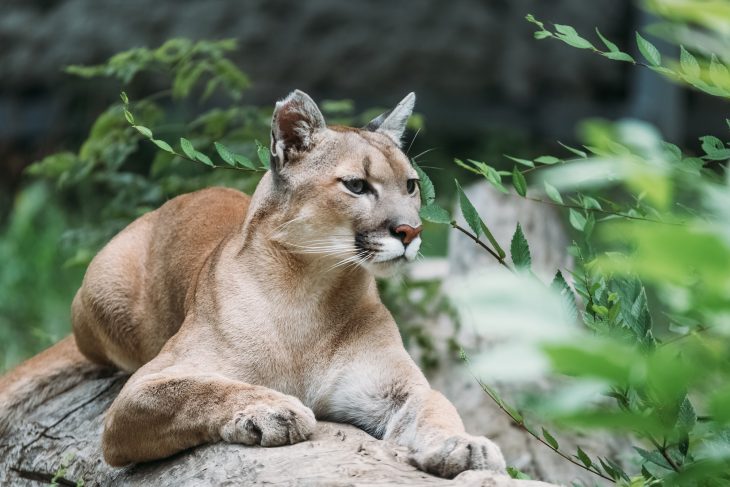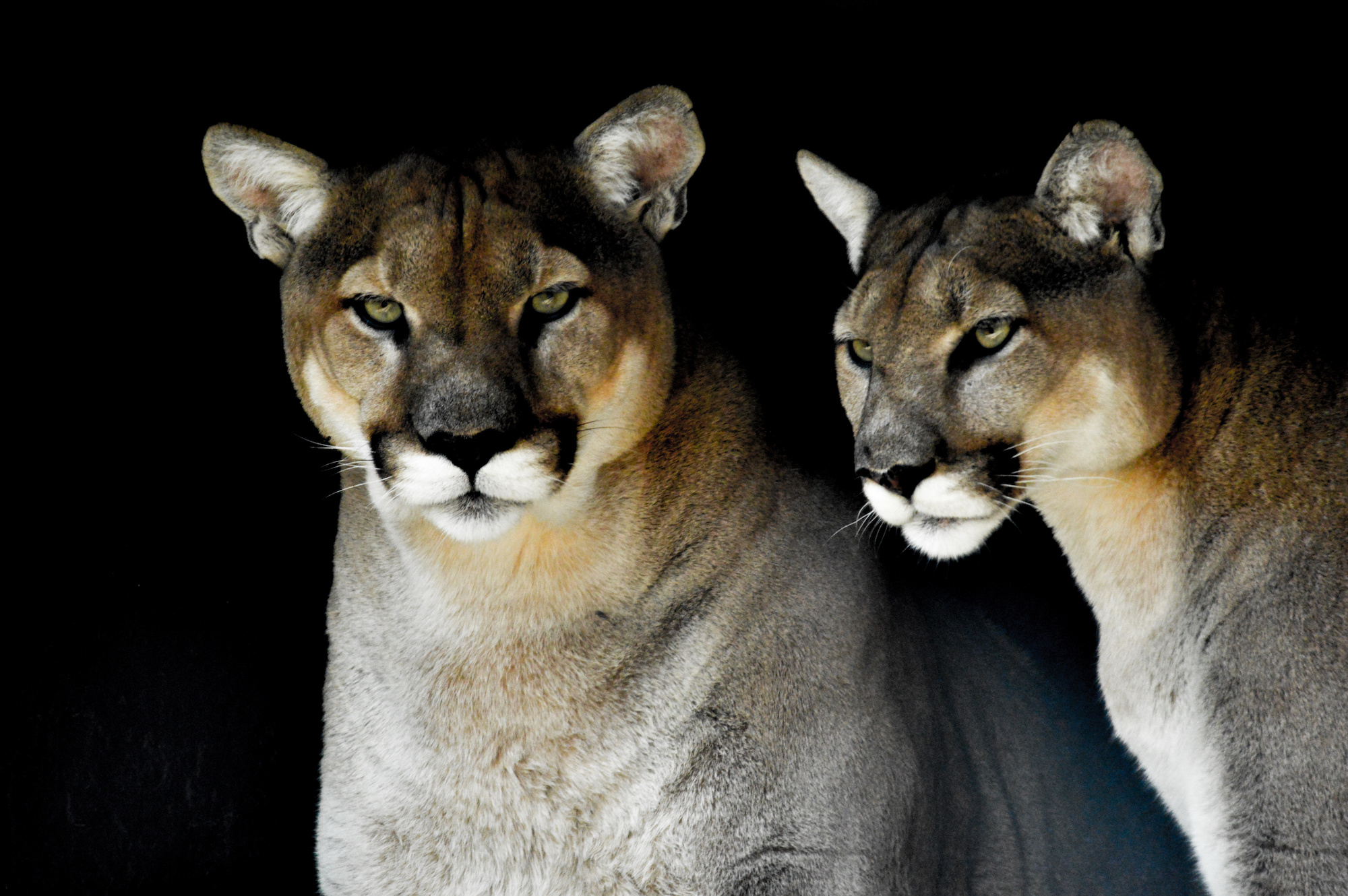
Pumas, commonly known as puma cats, are magnificent creatures that roam the wild landscapes of the Americas. These elusive felines captivate our imagination with their grace, strength, and solitary nature. In this article, we will delve into the fascinating world of pumas, uncovering intriguing details about their habitat, behavior, diet, and unique adaptations. Join us as we embark on an adventure to unravel the secrets of these awe-inspiring big cats.
Puma Cat: A Powerful Predator
Pumas, scientifically known as Puma concolor, are highly skilled predators that inhabit a diverse range of habitats, including forests, mountains, and grasslands. With their muscular build and powerful legs, these solitary hunters are equipped to take down a variety of prey, including deer, elk, and smaller mammals. Their ability to silently stalk and pounce on their unsuspecting victims is a testament to their exceptional hunting prowess.
Size and Appearance
Adult pumas are formidable in size, measuring between 6 and 8 feet in length, including their long tail, and standing around 2.5 feet tall at the shoulder. They weigh an impressive 100 to 200 pounds, with males generally being larger than females. Pumas have a sleek and muscular body, with short fur that can range in color from light brown to reddish-brown or gray, helping them blend seamlessly into their surroundings.
Extensive Range
Pumas have an extensive geographic range, spanning from the southern tip of South America to the northern regions of North America. They are found in a variety of ecosystems, including the dense rainforests of the Amazon, the rugged mountains of the Andes, and the arid deserts of the Southwest United States. This adaptability and wide distribution have earned them the title of the most widespread wild terrestrial mammal in the Western Hemisphere.
Solitary Lifestyle
Unlike many other big cats, pumas lead a solitary lifestyle. They establish large territories, with males requiring larger ranges that encompass several female territories. These elusive cats are highly elusive and prefer to avoid confrontation, except during mating season or when protecting their young. Pumas communicate with each other through vocalizations, scent markings, and visual cues, allowing them to maintain social boundaries without direct physical interaction.
Remarkable Adaptations
Pumas have evolved remarkable adaptations that enable them to thrive in diverse environments. Their keen senses of sight and hearing, coupled with retractable claws and padded paws, make them expert stealth hunters. They possess a flexible spine, aiding in precise maneuverability during pursuit and capture. Additionally, their hind legs are built for explosive bursts of speed, enabling them to reach impressive speeds of up to 50 miles per hour in short bursts.

Agile Climbers and Swimmers
Contrary to popular belief, pumas are not solely land-dwelling creatures. They possess exceptional climbing and swimming abilities, allowing them to traverse challenging terrain effortlessly. Pumas can scale trees with ease, providing them with an advantageous vantage point for hunting or resting. Additionally, they are proficient swimmers and can cross rivers and lakes to access new territories or pursue prey.
Puma Cubs: Early Life in Solitude
After a gestation period of approximately 90 to 96 days, female pumas give birth to a litter of one to six cubs. These adorable cubs remain with their mother for up to two years, during which they learn essential survival skills. The mother teaches them how to hunt, stalk prey, and navigate their surroundings. Once mature, the young pumas venture out on their own, seeking their own territories to establish and continue the cycle of life.
Conservation Status
Pumas face numerous conservation challenges, primarily due to habitat loss, fragmentation, and human-wildlife conflicts. Despite these obstacles, they are currently classified as “Least Concern” by the International Union for Conservation of Nature (IUCN). However, regional populations may be at greater risk, underscoring the importance of continued conservation efforts to ensure the long-term survival of these magnificent creatures.
Pumas in Mythology and Culture
Pumas have played significant roles in the mythology and culture of indigenous peoples throughout the Americas. They have been revered as symbols of power, agility, and spiritual guardianship. Puma motifs frequently appear in traditional artwork, reflecting the deep respect and awe these majestic cats have commanded for centuries.
Human-Puma Coexistence
As human settlements continue to encroach upon puma territories, promoting coexistence and reducing conflicts becomes vital. Efforts such as habitat conservation, public education, and responsible tourism can contribute to fostering a harmonious relationship between humans and pumas. By understanding and appreciating these fascinating creatures, we can work towards protecting their future and preserving the delicate balance of our shared ecosystems.
Conclusion
Pumas, or puma cats, are extraordinary creatures that embody the wild spirit of the Americas. Their powerful hunting abilities, adaptability, and solitary nature make them an integral part of the intricate tapestry of our natural world. From their extensive range and remarkable adaptations to their cultural significance and conservation challenges, pumas have captivated our imaginations for generations. Let us embrace our role as stewards of the Earth, ensuring that these majestic cats continue to roam the wild landscapes for generations to come.
Frequently Asked Questions (FAQs)
Are pumas and mountain lions the same animal?
Yes, pumas, mountain lions, cougars, and catamounts all refer to the same species, Puma concolor.
How fast can a puma run?
Pumas can reach speeds of up to 50 miles per hour in short bursts, thanks to their powerful hind legs.
Do pumas roar like other big cats?
No, pumas do not roar like lions or tigers. Instead, they produce vocalizations such as screams, growls, and purrs.
What is the lifespan of a puma in the wild?
In the wild, pumas typically live between 8 and 13 years, while those in captivity may reach up to 20 years.
Do pumas have any natural predators?
Adult pumas have few natural predators, although they may occasionally fall prey to larger predators like bears or wolves.
Was this page helpful?
Our commitment to delivering trustworthy and engaging content is at the heart of what we do. Each fact on our site is contributed by real users like you, bringing a wealth of diverse insights and information. To ensure the highest standards of accuracy and reliability, our dedicated editors meticulously review each submission. This process guarantees that the facts we share are not only fascinating but also credible. Trust in our commitment to quality and authenticity as you explore and learn with us.
